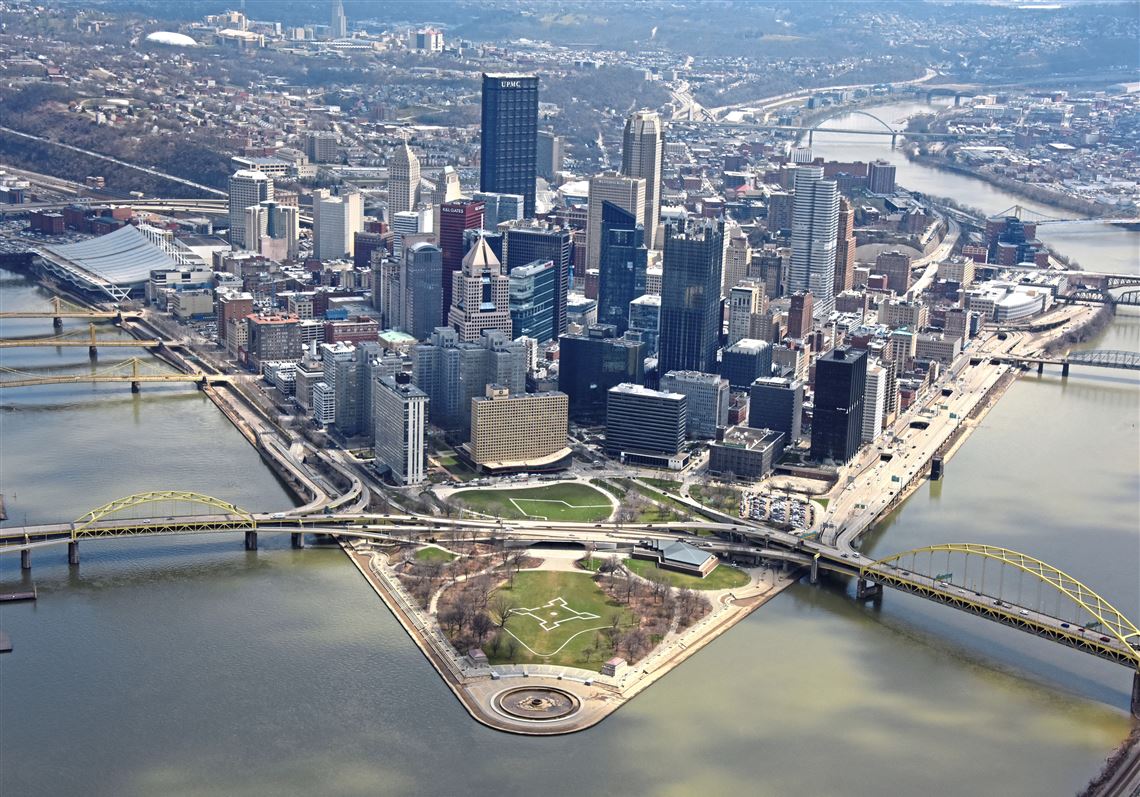By John Tierney
https://www.city-journal.org/pittsburghs-comeback
Summer 2019

(Darrell Sapp/Post-Gazette)
If you want to see how to revive a city—and how not to—go to Pittsburgh. No other modern American city has worked so hard for so long in so many ways to reinvent itself. It transformed itself from the Smoky City to the Renaissance City in the 1940s, and that was just the beginning. Pittsburghers today refer to that era as Renaissance I because they’re now up to Renaissance III—or maybe IV, depending on how you count.
The past rebirths enthralled urban planners and put Pittsburgh high in the rankings of “most livable” cities, but a problem recurred: fewer and fewer people actually wanted to live there. As the master builders obliterated streets and erected towers, young people left town. I was one of them, having experienced, a few blocks from my parents’ home, a would-be renaissance hailed in the 1960s as the largest urban-renewal project in America.
It was an attempt to revitalize a part of the city called East Liberty, once the third-busiest retail district in Pennsylvania, surpassed only by the downtowns of Philadelphia and Pittsburgh. As a teenager working there in a drug store, I initially admired the planners’ bold makeover, assuming that these experts knew far more than the rest of us. The drugstore owners, who regularly cursed the project’s new pedestrian malls and boulevards and high-rises, struck me as sadly retrograde—until I saw the eventual results. Hundreds of businesses shut down and thousands of residents fled, turning the neighborhood into a crime-ridden wasteland. When I worked at the Pittsburgh Press in 1974, the only story I covered in East Liberty was the shooting of a police officer.
Pittsburghers resolved on yet another renaissance. “Never-Say-Die East Liberty Fights Back,” the Press proclaimed in 1983, but things just got worse as the shutdown of steel mills devastated the city’s economy. My visits back to East Liberty became nostalgic tours of the ruins. There was the deserted Nabisco plant, whose Ritz-cracker aromas had once wafted over our baseball field. There was my dentist’s former office, the Highland Building, erected by Henry Clay Frick and designed by Daniel Burnham (the architect of the Flatiron Building), its stately terra-cotta façade now crumbling and its doors boarded up. There was the YMCA, where we’d played basketball, now abandoned except for the men from the nearby homeless shelter passed out on the sidewalk. There was the corner where my old drugstore stood until a fire of mysterious origin (well, maybe not so mysterious) destroyed it.
The renaissancers kept trying—“Hope in East Liberty,” ran a 1996 headline—but the people kept leaving. By 2010, Pittsburgh’s population was barely 300,000, less than half its size in 1950. Pittsburgh had all the comparative disadvantages of other Rust Belt cities: high taxes, powerful unions, burgeoning pension obligations, inferior public schools, and a decaying infrastructure. East Liberty and the rest of the city seemed a lost cause.
But then, over the past decade, I was stunned to see the ruins come to life. Google’s flag flies over the old Nabisco plant, now an office employing more than 600 of its techies. The renovated Highland Building rents two-bedroom apartments for more than $3,000 a month—a staggering sum to anyone familiar with Pittsburgh real estate, though not quite as shocking to me as what’s happened to the YMCA. The old gym, its peeling paint lovingly preserved, has become the ballroom of a cooler-than-thou Ace Hotel, the homeless men on the sidewalk replaced by a valet-parking attendant.
How did this happen? Outside economic forces were partly to thank: the new money flowing into Pittsburgh from fracking, robotics, health care, and other industries. But some credit goes to the same kind of coalition that led the earlier renaissances: business leaders, philanthropists, nonprofit groups, politicians, and developers. They learned from their predecessors’ mistakes, and the lessons are valuable for any city.
Click on the link below to read the rest of the article:
https://www.city-journal.org/pittsburghs-comeback
No comments:
Post a Comment